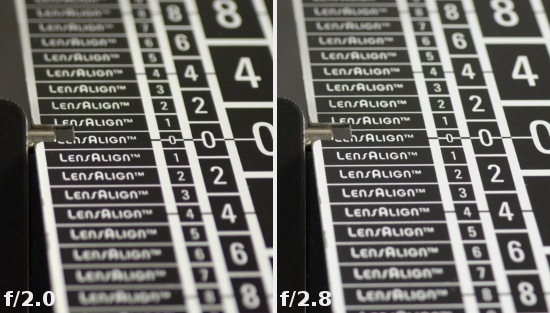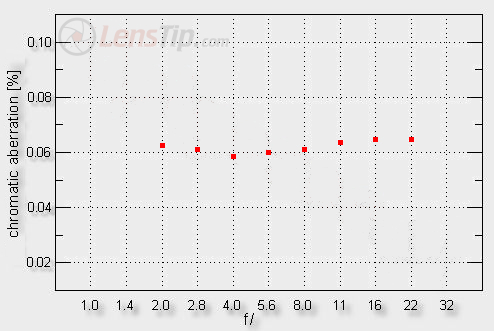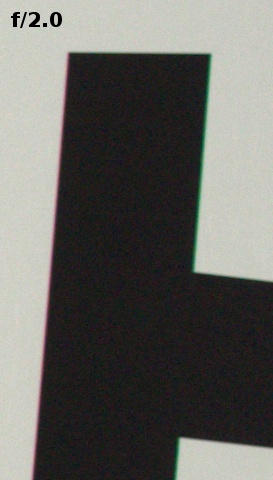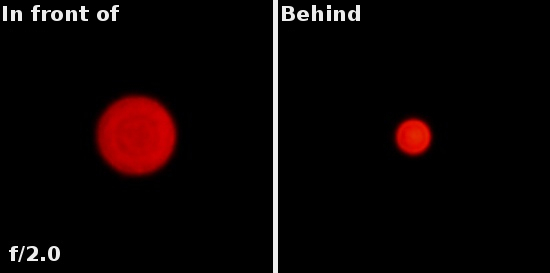Samyang 16 mm f/2.0 ED AS UMC CS
5. Chromatic and spherical aberration
Chromatic aberration
Full frame 1.4/24 or 2/24 class lenses can have a lot of problems with longitudinal chromatic aberration so we were curious how the Samyang 2/16 would fare here. Looking at crops below you see it performs very well.
 |
Please Support UsIf you enjoy our reviews and articles, and you want us to continue our work please, support our website by donating through PayPal. The funds are going to be used for paying our editorial team, renting servers, and equipping our testing studio; only that way we will be able to continue providing you interesting content for free. |
- - - - - - - - - - - - - - - - - - - - - - - - - - - - - - - - - - - - - - - - - - - - - - - -
The lateral chromatic aberration can be described in similarly positive terms – it doesn’t depend on the value of used aperture and it keeps a low level of 0.060–0.065% everywhere.

 |
Spherical aberration
Spherical aberration is also corrected in a proper way. The first photo in this chapter shows that there is no ‘focus shift’ effect. We have no serious reservations about the blurred light points you get in front of and behind the focus. Still, due to a significant depth of field provided by the lens, it is impossible to get equally big circles in both focus positions so you shouldn’t express too binding opinions based on this test.







